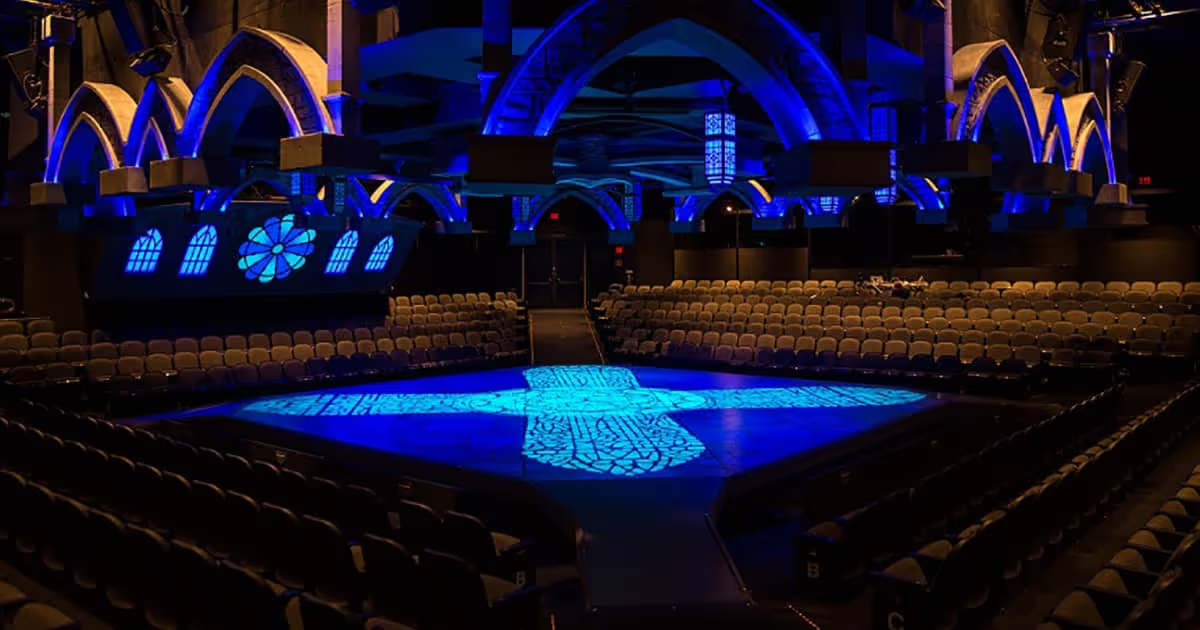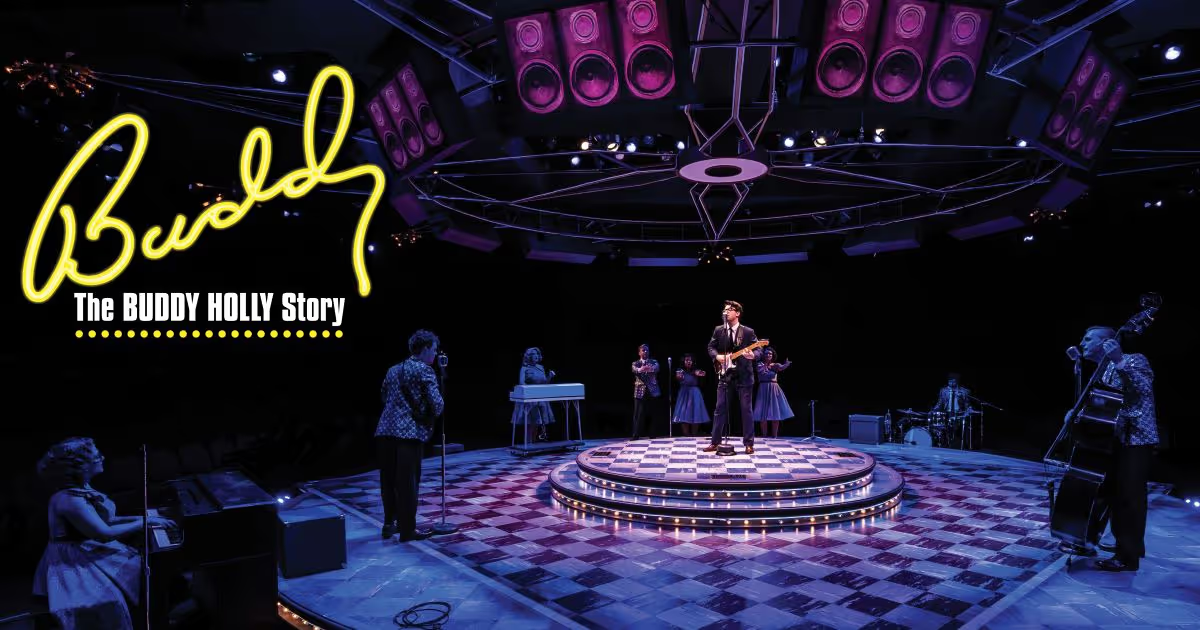Rave On: the joyful jukebox musical Buddy: The Buddy Holly Story takes us back to before “the day the music died”
There are some shows that blow you away. There are others that just feel comfortable, warm, and familiar, like a soft blanket. Buddy: The Buddy Holly Story, now playing at Marriott Lincolnshire Theatre, is one of the latter. Despite our knowledge of how it ends—and the show makes no effort whatsoever to hide the tragic plane crash that ended Holly’s life—or perhaps because we know the tremendous impact he had in his too-brief career, the musical plays as not so much a biography as a tribute. Yes, we learn many things about Holly’s life and about the Crickets’ short career, but this show mostly exists for the old, familiar songs.
We join Holly, a 20-year-old from a musical family in Lubbock, Texas, when he has just formed the Crickets with two friends in 1956. As the young star, Kieran McCabe is simply amazing, turning in a full-on impersonation and completely ingratiating himself to the audience. Holly’s genius led him to write and record more than a dozen major hit rock and roll songs in a couple of jam-packed years. His gentle-but-firm ego forced producers to do them his way, and the show, especially McCabe, provides ample evidence of the youthful energy that went along with that.
This is the kind of show that is pretty much a perfect fit for the Marriott: family-friendly, thoroughly entertaining, and almost conflict-free—Alan Janes’ book gives short shrift to objections by country and western executives, a brief but important fight among the Crickets, and two key racial issues, showing that they existed but not belaboring them—it is basically a G-rated show about rock stars, which almost sounds oxymoronic.
The thing is that Holly was a perfect product of his time: a vastly talented and innovative musician and songwriter raised in the wholesome atmosphere of Texas Christianity (it’s sad that that phrase seems frustratingly out of date due to current political issues) whose personality always reflected where it was forged. McCabe is generous with the big smile, the “aw, shucks” attitude, and the soft-spoken self-assurance of the man from Lubbock, which was strong enough that he could walk away from sure-thing recording offers to find a better fit. He is also highly energetic, bouncing all over the stage with infectious enthusiasm as he plays hits like “Oh Boy,” “That’ll Be the Day,” and “Peggy Sue.” (The latter, renamed from “Mary Lou” for the girlfriend of his bandmate Jerry after a brief refusal from Holly, is the perfect example of the level of conflict illustrated here.)
As the Crickets, Jed Feder and Shaun Whitley perfectly complement McCabe in every way. In their joy in the songs, their spirited musicianship, and their clear passion for their profession in general and their band in specific, the two actors bring to life the friends who backed Holly and with him created generational music. The band’s fallout with him, a thing that altered all of their lives, is handled—as are all of the conflicts here—in a short, sudden scene that explains what is happening and then moves on. Fortunately—though a bit confusingly too—for the audience, these two actors reappear as different characters for the final concert with Big Bopper (David Stobbe, whose rendition of “Chantilly Lace” is perfect) and the 17-year-old Richie Valens (Jordan Arredondo, who has every bit of McCabe’s energy and shows it in singing “La Bamba”).
Other cast standouts include Molly Hernandez as Maria Helena, the Latina receptionist who becomes Holly’s wife. Their adorable “meet-cute” has Holly falling head over heels for her at first sight and immediately declaring that he will marry her. He even gets her the afternoon off (she works for his producer) so he can woo her over a bit more time, but they are engaged before the day is over. McCabe manages to make Holly’s determination here cute, not chauvinistic. However, in their final scene together, Hernandez’ frantic and emotional explanation of a nightmare Maria Elena has had that presages disaster only causes Holly to put his arm around her in a patriarchal “there, there.” (The premonition, BTW, is historically accurate.) Also praiseworthy are the performances of two Black actors, Melanie Brezill and Marcus Terell, who play the major performers and hosts at the Apollo, during a concert that was as dangerous—given the racial tension involved—as it was unbelievably successful. Watching Brezill and Terell morphing from sceptics to fans is almost as joyful as watching the band as it plays.
Amber Mak directs and choreographs the show, and her work is simply wonderful. From the band’s movements to the dance sequences at the Apollo to the celebratory sequences at the final concert, she makes everything seem so natural that the simultaneous guitar moves by the band in that last show—a trademark of the era—call attention to themselves even more than that kind of showy stagemanship always will. And the musicians executing those moves are perfect.
Whether you’re a Boomer who has lived all of their life with Holly’s music, a younger person who only knows some of his songs, or someone who knows nothing at all about him, Buddy: The Buddy Holly Story is a joyous celebration of his heart and his talent, as well as the exuberance of youth and the seemingly endless possibilities that young artists of his era enjoyed. Don McLean, in his song “American Pie,” famously called that plane crash “the day the music died,” but the thing about music is that, as long as someone sings or plays it, it simply can’t die; its spirit is kept alive with ardent zeal in shows like this one.











